Canon WP-DC38 User Manual [ru]
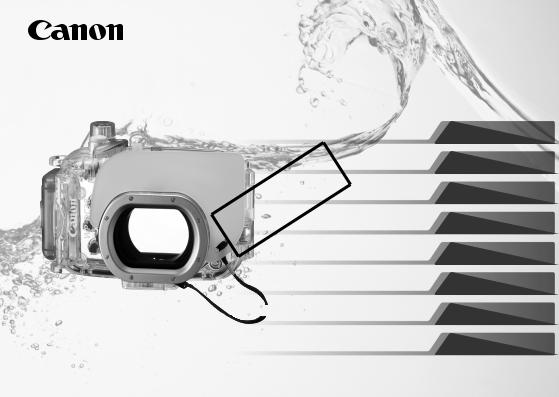
WP-DC38
User Guide
COPYBenutzerhandbuch
Guía del usuario
Guide d'utilisation
Guida dell'utente
Руководство пользователя
ENGLISH
DEUTSCH
ESPAÑOL
FRANÇAIS
ITALIANO
РУССКИЙ
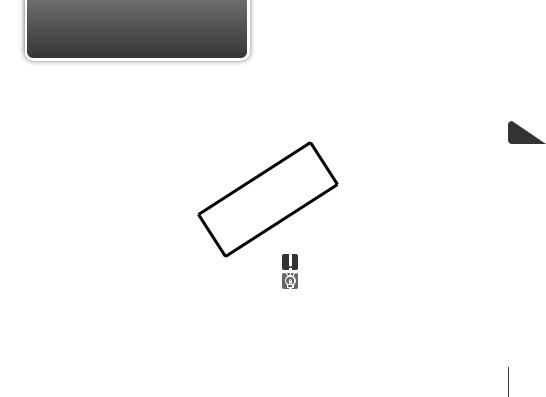
|
|
|
|
|
|
• |
|
|
15cm |
||
|
||
3 |
||
• |
||
|
||
|
||
|
|
|
|
||
|
• |
|
||
|
||||
|
|
|||
|
|
|||
• |
|
|||
|
|
|||
|
|
|
||
□ |
|
|
||
|
• |
|
||
□ |
|
|
|
|
□ |
|
• |
|
|
□ |
|
|
|
|
□ |
|
|
|
|
□ |
|
• |
||
□ |
COPY |
|||
|
|
• |
|
|
|
|
• |
|
|
• |
|
• |
|
|
WW-DC1 |
|
|
|
|
p.12
1
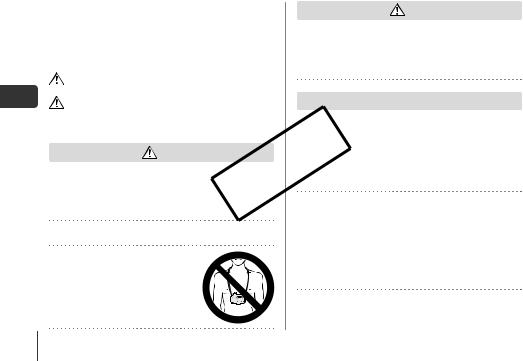
|
|
• |
|
|
• 危害や損害を未然に防止するためのものです。
|
|
|
|
|
|
|
|
|
|
|
|
|
|
COPY |
|
|
|
|
( ) |
|
|
|
|
|
|
||
|
|
||
|
• |
||
|
|
||
|
• |
||
|
|
|
|
|
|
• |
|
|
• |
||
|
|
|
|
|
|
|
|
|
• |
||
|
|
|
|
|
|
||
2
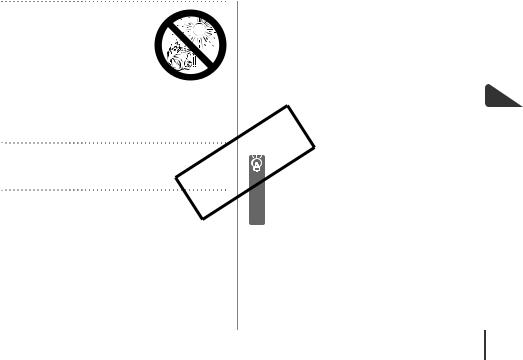
|
|
|
• |
||
• 40m |
||
• 40 |
|
|
|
|
|
|
|
|
• |
||
• |
||
|
||
• |
||
|
||
• |
||
• |
||
|
||
|
|
|
|
• |
|
|
||
|
||
COPY |
||
|
1 1 |
|
|
|
|
|
||
• |
||
|
||
|
|
|
|
|
|
|
|
3
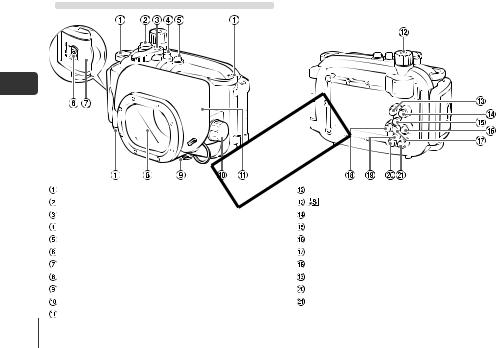

|
COPY |
|
|
|
|
|
|
/c |
|
|
1 |
|
|
b /d /o |
|
h / r |
|
|
|
mFUNC./SET / |
|
|
e / f /q |
|
|
Q / a1 / p |
|
|
l |
|
|
n |
|
|
|
4


1
|
COPY |
|
5

|
|
2 |
COPY |
|
|
|
|
|
|
6

|
COPY |
||
3 |
|
4 |
|
• |
1 . |
||
|
|
|
• |
|
|
|
|
|
|
|
2 . |
|
3 . |
|
|
||
|
||
|
||
4 . |
||
|
||
|
• |
7
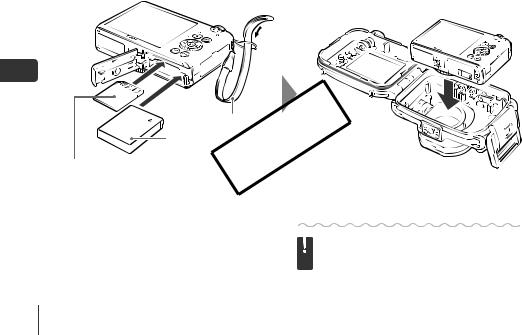
|
|
|
|
|
|
|
|
5 |
COPY |
|
|
6 |
|
•
|
• |
|
|
||
|
•
•
•
8
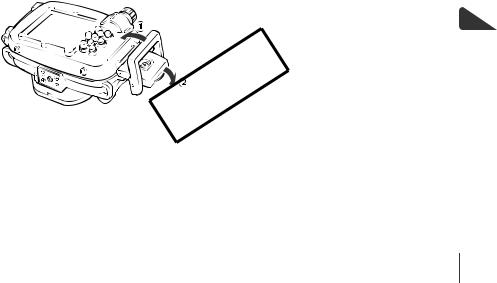
7
|
COPY |
9

|
|
• |
[E] [G] [M] [B] [D] |
|
|
|
|
|
 |
|
|
[S] ( ) |
||
|
|
|
|
|
|
|
• |
[ ] ( ) |
|
|
|
|||
|
|
|
||
[S] |
|
|
||
|
|
|||
|
|
|||
|
|
|||
|
|
|
|
|
|
|
|
|
|
q |
p |
|
||
COPY |
||||
|
|
|
|
|
|
|
|
|
|
|
|
o |
• q r |
|
|
|
r |
|
|
m
1
2
3
K
m op [ I]
q r [S] m
10
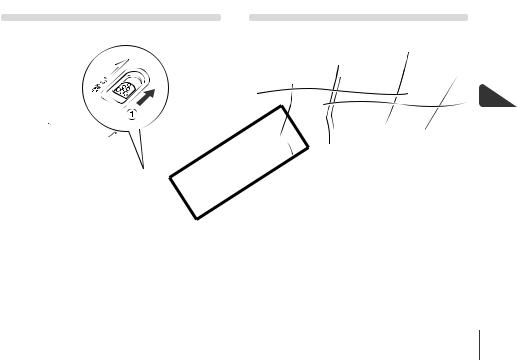






 COPY
COPY
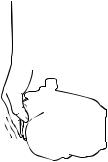











1
2
1
2
11


IEC/JIS IPX840m
O
0 40
140.6 × 91.5 × 85.1mm
|
|
COPY |
|
|
630cm3 |
||
|
|||
|
385g |
|
|
|
|
||
WW-DC1
21
製品の製造打切り後7
()
12
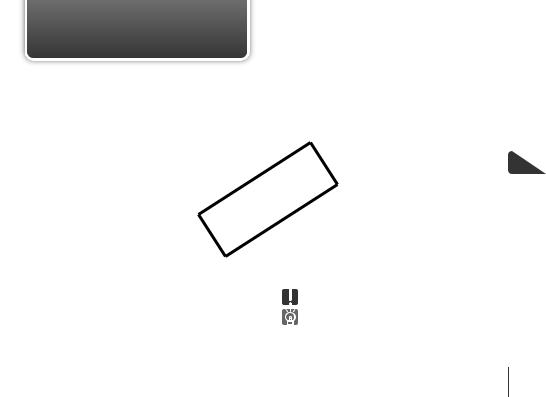
English
•Make sure you read this guide before using the Waterproof Case.
•Store this guide safely so that you can use it in the future.
Read This First
Before you use the Waterproof Case, make sure it is functioning correctly and does not leak. To check for leaks, close the camera case before putting the camera in, and hold it under water at an approximate depth of 15 cm (5.9 in.) for about three minutes. If it leaks, contact a Canon Customer Support Help Desk.
Checking the Package Contents |
Disclaimer |
|||
Check if the following items are included in your |
||||
• Reprinting, transmitting, or storing in a retrieval system |
||||
Waterproof Case package. If anything is missing, contact |
||||
|
any part of this guide without the permission of Canon |
|||
the retailer from which you purchased the Waterproof |
|
|||
|
is prohibited. |
|||
Case. |
|
|
||
|
• Canon reserves the right to change the contents of this |
|||
Waterproof Case |
|
|||
|
|
guide at any time without prior notice. |
||
Neck Strap |
|
• |
Illustrations and screenshots in this guide may differ |
|
Wrist Strap |
|
|
slightly from the actual equipment. |
|
Diffusion Plate |
|
• |
Canon Inc., its subsidaries and affiliates, and |
|
Silicon Grease for the Waterproof Seal |
|
|
distributors of the Waterproof Case are not liable for |
|
User Guide (this guide) |
COPY |
|||
|
|
|
any damages due to misuse of the case. |
|
Separately Sold Accessories |
|
• Please also carefully read the Camera User Guide |
||
|
|
supplied with your camera. |
||
• Canon Waterproof Case Weight WW-DC1 |
|
• |
: Things you should be careful about. |
|
When taking pictures underwater, these weights prevent |
||||
|
|
|||
the Waterproof Case from floating. Please refer to |
• |
: Hints for getting more out of your Waterproof |
||
Specifications (p. 12) for the number of recommended |
|
Case. |
||
weights to be attached. For information on attaching the |
• |
The various types of memory cards that can be used in |
||
weights, please refer to the user guide supplied with the |
|
the camera are collectively referred to as memory cards |
||
weights. |
|
|
in this guide. |
|
1
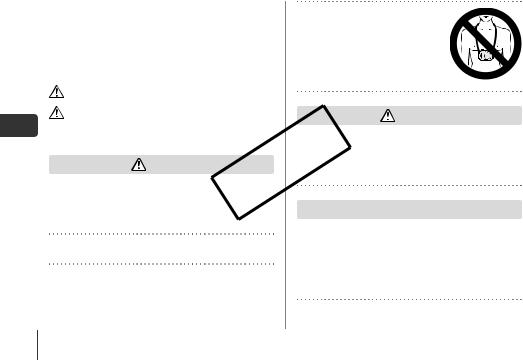
Safety Precautions
•Before using the Waterproof Case, please ensure that you read the safety precautions below. Always ensure that the Waterproof Case is operated correctly.
•The safety precautions noted on the following pages are intended to prevent injuries to yourself and other persons, or damage to the equipment.
Warning |
Denotes the possibility of serious injury or |
|
death. |
||
|
Do not use the neck strap under water.
Remove the neck strap and attach the wrist strap before using the Waterproof Case underwater. Using the neck strap may cause it to become
wrapped around the neck and result in strangulation or other injuries.
Caution |
Denotes the possibility of injury. |
Caution |
|
Caution |
Denotes the possibility of damage to the |
Immediately turn off the camera if the Waterproof Case |
|
|
|
||
|
|
COPY |
|
|
Waterproof Case and camera. |
leaks. |
|
|
Warning |
|
Leaks could result in fire or electrical shock. Thoroughly wipe |
|
|
the Waterproof Case interior and the camera dry and contact |
|
a Canon Customer Support Help Desk.
Be sure to remove the camera after using the |
|
|
Waterproof Case. |
|
|
Leaving the camera in the Waterproof Case and placing it in |
Caution |
|
direct sunlight or other places subject to high temperatures |
||
|
||
may result in fire, or cause the case to burst. |
|
Do not use the Waterproof Case as a personal flotation device (such as a life preserver).
2
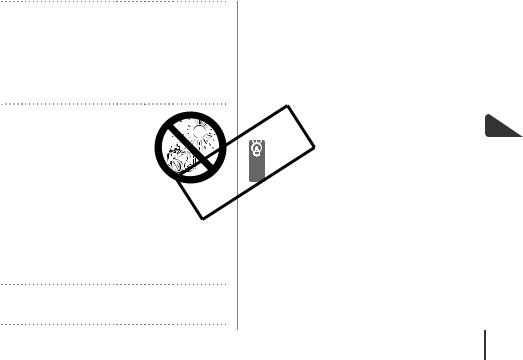
• Do not insert the camera with the strap attached. |
Waterproof Seal |
|
|
||
• Do not press the buttons or lever with unnecessary |
• Debris stuck to the waterproof seal may cause water |
|
force when using the case underwater. |
|
leakage. Catching a single strand of hair, or a tiny grain of |
• Do not spray the waterproof seal with tap-water. |
sand in the seal can cause leaks. |
|
• Do not damage the waterproof seal, or allow dirt to |
• If you notice that the waterproof seal is damaged or |
|
accumulate between the waterproof seal and the |
cracked, stop using the case immediately and contact a |
|
case. |
|
Canon Customer Support Help Desk. |
• Do not disassemble or modify the Waterproof Case. |
• When storing your Waterproof Case, keep it open to |
|
The above actions could cause leaks. |
|
prevent the waterproof seal from deforming and to |
|
|
maintain its waterproof capabilities. |
Avoid using or storing the |
|
• Protect the waterproof seal from dust and scratches during |
Waterproof Case in the following |
|
storage. |
places. |
|
To ensure that the case remains watertight, you should |
• Depths exceeding 40 meters |
|
|
(130 ft.). |
|
replace the seal once a year. |
• Places subject to temperatures |
|
• Please contact a Canon Customer Support Help Desk |
above 40 °C (104 °F). |
|
for replacement seals. |
Avoid placing, or storing the |
COPY |
|
Waterproof Case in the following |
||
places. |
||
• Places subject to strong sunlight. |
||
• Humid or dusty areas.
• Near substances such as napthalene or insecticides
Do not drop or throw the Waterproof Case.
The above actions may warp the case and cause malfunctions.
Use only the supplied silicon grease.
Use of other waterproofing products may impair the strength of the Waterproof Case.
3
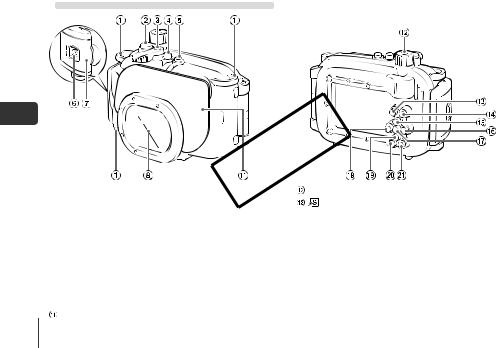
 Components Guide
Components Guide
 Strap Mounts
Strap Mounts
 Shutter Button
Shutter Button
 Zoom Lever
Zoom Lever
 Power Button
Power Button
 Ring Function Selector
Ring Function Selector
 Lock Release Switch
Lock Release Switch
 Catch
Catch
 Lens Window
Lens Window
 Tripod Socket
Tripod Socket
 Control Ring
Control Ring
Diffusion Plate
4



 COPYMode Dial c
COPYMode Dial c
(Shortcut)/ (Direct Print) Button
 1(Playback) Button
1(Playback) Button
 b(Exposure Compensation)/ d(Jump)/oButton
b(Exposure Compensation)/ d(Jump)/oButton
 h(Flash)/rButton
h(Flash)/rButton
 mFUNC./SET (Function/Set) Button
mFUNC./SET (Function/Set) Button
 e(Macro)/ f(Manual Focus)/qButton
e(Macro)/ f(Manual Focus)/qButton
 Q(Self-timer)/a(Single Image Erase)/pButton
Q(Self-timer)/a(Single Image Erase)/pButton
 l(Display) Button
l(Display) Button
 nButton
nButton

 Preparations
Preparations
1
Wrist Strap |
COPY |
|
Attach the strap and adjust the length.
Neck Strap
•Remove the neck strap and attach the wrist strap before using the case underwater. Using the neck strap may cause it to become wrapped around the neck and result in strangulation or other injuries.
•Do not attach any straps except for the ones included with the Waterproof Case.
5

Diffusion Plate
2 |
Attach the diffusion plate. |
COPY |
|
|
|
|
Removing the |
|
|
|
Diffusion Plate |
|
• Do not scratch the surface of the diffusion plate, |
Lift and remove the |
|
|
diffusion plate. |
||
|
as this may prevent light from the flash from |
|
|
being properly diffused.
•The effectiveness of the diffusion plate may be impaired if the subject is too close to the camera.
6

Waterproof Seal
3 |
Release the catch to open the case. |
Apply silicon grease to the waterproof |
|
• When using commercially available |
4 seal. |
||
|
anticondensation products, the |
1 . |
Remove the waterproof seal as shown. |
|
anticondensation solution should onlyCOPY• Do not dig your fingernails into it or pull |
||
|
be applied to the inside surface of the |
|
on it forcibly. |
|
lens window using a soft, dry cloth. If |
2 . |
Using a cotton swab, wipe off any debris in |
|
anticondensation solution comes in contact |
|
the mounting groove. |
|
with any surface other than the inside of the |
3 . |
Apply a small amount (droplet) of grease to |
|
lens widnow, wipe it off immediately with a |
|
your fingertip, and evenly coat the entire |
|
soft, dry cloth, as it could lead to deterioration |
|
surface of the waterproof seal. |
|
of the Waterproof Case. |
4 . |
Place the waterproof seal back in the seal |
|
|
|
mounting groove. |
|
|
|
• Take care not to twist it. |
7
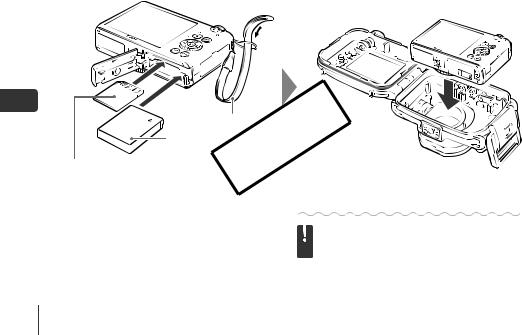
Preparing the Camera |
Inserting the Camera Into the Case |
Strap
|
Battery |
|
|
|
Memory Card |
|
|
|
|
Remove the strap, and make sure the |
|
Insert the camera into the Waterproof |
||
|
|
COPY |
||
5 battery and memory card are in the |
6 |
Case. |
||
camera.
•Please refer to the Camera User Guide for information on the correct battery, and how to insert the battery and memory card.
•Use a battery that is adequately charged.
•Check the estimated capacity of your memory card and ensure there is enough space to record images.
•Choose a place well away from salty sea air.
•Keep the lens window clean by wiping it gently with a dry cloth.
8
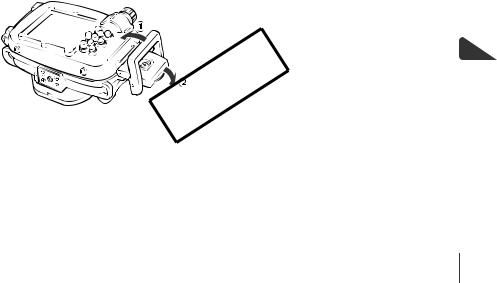
7 |
Close the case. |
COPY |
|
|
|||
• |
Make sure that the waterproof seal is free of |
||
|
|
debris. |
|
|
• |
Make sure that the catch is securely locked. |
|
9
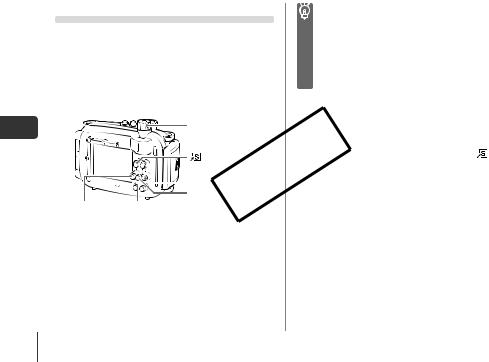
 Using the Camera
Using the Camera
for instructions
•When shooting underwater in E, G, M, Bor Dmodes, you should set the white balance to S (Underwater) using the FUNC. menu.
•You can set the white balance manually with the
press of a single button if you assign the  (Custom White Balance) function to the
(Custom White Balance) function to the  button. Try this for adjusting the white balance to the shooting conditions.
button. Try this for adjusting the white balance to the shooting conditions.
1
2
3
Using the Control Dial
 oButton
oButton




 rButton
rButton
mButton
qButton pButton
Mode Dial |
Using the control dial with the waterproof case differs |
|
|
slightly from that of the camera itself. |
|
Button |
• ress the qrbuttons while pressing the |
button. |
COPY |
|
|
After pressing the mbutton, press the opbuttons to choose I.
Press the qr buttons to choose S, then press the m button.
10

Removing the Camera |
Care and Maintenance |
1
2
Make sure to do the following after using the
Waterproof Case.
COPY |
|||
Thoroughly dry the case, wiping off all |
1 |
Close the case. |
|
the water. |
• Do not wash the interior of the Waterproof |
||
• Remove any dirt, sand, hair or other debris |
|
Case with water. Wipe it with a soft, dry cloth. |
|
from the case and wash it with clean, running |
|
Thoroughly wash the case with clean |
|
water to remove any salt deposits. |
|
||
2 water, then wipe it completely dry with |
|||
Open the case and remove the camera. |
|||
|
a soft, dry cloth. |
||
• After using the case in the ocean, soak it in clean water for several hours to remove any salt deposits.
11

 Specifications
Specifications
Waterproof |
Meets IEC/JIS protection rating“IPX8” |
Capability: |
equivalent |
|
For use within a depth of 40m (130 ft.) |
Waterproofing: |
Seal (crimp-type O-ring) |
Body Materials: |
Polycarbonate |
Camera Operating Temperatures: |
|
|
0 to 40 °C (32 to 104 °F) |
Dimensions: |
140.6 x 91.5 x 85.1 mm |
|
(5.54 x 3.60 x 3.35 in.) |
|
(excluding protrusions) |
Volume: |
Approx. 630 cm3 (38.4 in.3) |
Weight: |
Approx. 385 g (13.6 oz.) |
|
(Waterproof Case only*) |
Number of Separately Sold Waterproof CaseCOPYWeights
(WW-DC1) Recommended Mounting:
When in sea water: 2 weights When in fresh water: 1 weight
*Including diffusion plate
•All data noted here are based on Canon’s testing standards.
•Product specifications and appearance are subject to change without prior notice.
12
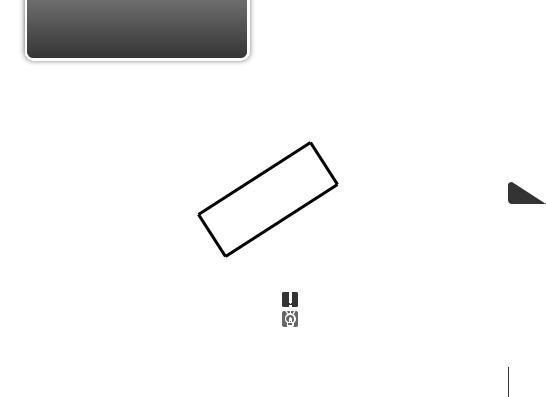
Deutsch
Bitte zuerst lesen
|
|
|
Stellen Sie vor dem Gebrauch des Unterwassergehäuses |
||
• |
Lesen Sie sich dieses Handbuch gut durch, |
|
sicher, dass es ordnungsgemäß funktioniert und kein |
||
|
Leck hat. Zur Prüfung auf Lecks schließen Sie das |
||||
|
bevor Sie das Unterwassergehäuse verwenden. |
||||
|
Kameragehäuse, bevor Sie die Kamera einsetzen, |
||||
• |
Bewahren Sie dieses Handbuch zur späteren |
|
|||
|
und halten es etwa drei Minuten lang in einer Tiefe von |
||||
|
Verwendung sicher auf. |
|
|||
|
|
ca. 15 cm unter Wasser. Falls es eine undichte Stelle |
|||
|
|
|
|||
Überprüfen des Lieferumfangs |
aufweist, wenden Sie sich an den Canon-Kundendienst. |
||||
Haftungsausschluss |
|||||
Überprüfen Sie, ob die folgenden Teile im Lieferumfang |
|||||
des Unterwassergehäuses enthalten sind. Wenden Sie |
• Dieses Handbuch darf ohne die Genehmigung von Canon |
||||
sich an den Händler, von dem Sie das Unterwassergehäuse |
|||||
|
weder ganz noch teilweise nachgedruckt, übertragen |
||||
erworben haben, falls etwas fehlen sollte. |
|
|
|||
|
|
oder in Informationssystemen gespeichert werden. |
|||
|
|
|
|
||
Unterwassergehäuse |
|
• Canon behält sich das Recht vor, den Inhalt dieses |
|||
Trageriemen |
|
|
Handbuchs jederzeit ohne Vorankündigung zu ändern. |
||
Handschlaufe |
|
• Die in diesem Handbuch verwendeten Abbildungen |
|||
Streuscheibe |
|
|
können sich vom tatsächlichen Gerät unterscheiden. |
||
Silikon-Paste für Dichtungsring |
|
• Canon Inc., dessen Tochtergesellschaften und |
|||
Benutzerhandbuch (dieses Handbuch) |
|
|
angegliederte Unternehmen sowie die Distributoren |
||
|
|
|
|
des Unterwassergehäuses haften nicht für Schäden, die |
|
Separat erhältliches Zubehör |
COPY |
||||
|
|
durch die falsche Verwendung des Gehäuses entstehen. |
|||
• |
Gewicht für Canon Unterwassergehäuse WW-DC1 |
• Bitte lesen Sie ebenfalls das mit Ihrer Kamera gelieferte |
|||
|
Kamera-Benutzerhandbuch sorgfältig. |
||||
Wird das Unterwassergehäuse für Unterwasseraufnahmen |
|
||||
|
|
||||
verwendet, so dienen diese Gewichte dazu, das Gehäuse |
• |
: Zu beachtende Punkte. |
|||
zu beschweren. Weitere Informationen zur empfohlenen |
• |
: Hinweise zur optimalen Nutzung des |
|||
Anzahl anzubringender Gewichte finden Sie in den |
|||||
technischen Daten (S. 12). Informationen zur Befestigung |
|
Unterwassergehäuses. |
|||
der Gewichte erhalten Sie im Benutzerhandbuch für die |
• Die verschiedenen Arten der für die Kamera geeigneten |
||||
Gewichte. |
|
|
Speicherkarten werden in diesem Benutzerhandbuch |
||
|
|
|
|
einheitlich als Speicherkarten bezeichnet. |
|
1

Sicherheitsvorkehrungen
•Lesen Sie die im Folgenden beschriebenen Sicherheitsvorkehrungen vor der Verwendung des Unterwassergehäuses gut durch. Achten Sie stets darauf, dass das Unterwassergehäuse ordnungsgemäß verwendet wird.
•Die auf den folgenden Seiten erläuterten Sicherheitsvorkehrungen sollen verhindern, dass Sie selbst oder andere Personen zu Schaden kommen oder Schäden am Gerät entstehen.
Weist auf die Möglichkeit von schweren Warnhinweis Verletzungen oder Tod hin.
Verwenden Sie den Trageriemen nicht unter Wasser.
Nehmen Sie den Trageriemen ab, und bringen Sie die Handschlaufe an, bevor Sie das Unterwassergehäuse unter Wasser verwenden. Bei der Verwendung des Trageriemens besteht die Gefahr, dass sich der Riemen am Hals verheddert und zu Strangulation oder anderen Verletzungen führt.
 Vorsicht
Vorsicht
Vorsicht |
Weist auf die Möglichkeit von |
Schalten Sie die Kamera sofort aus, falls das |
|
Verletzungen hin. |
Unterwassergehäuse Lecks aufweist. |
||
|
|||
Vorsicht |
Weist auf die Möglichkeit von Schäden |
Lecks könnten Feuer oder einen elektrischen Schlag zur Folge |
|
haben. Wischen Sie das Innere des Unterwassergehäuses und |
|||
an Unterwassergehäuse und Kamera hin. |
|||
|
die Kamera gründlich trocken, und wenden Sie sich an den |
||
|
|
||
|
|
Canon-Kundendienst. |
Warnhinweis |
COPY |
|
|
Vorsicht |
|
Denken Sie daran, die Kamera nach dem Gebrauch |
|
|
des Unterwassergehäuses aus dem Gehäuse |
Achten Sie auf die Bildung von Kondenswasser. |
|
herauszunehmen. |
||
Ein schneller Wechsel des Unterwassergehäuses zwischen |
||
Wenn die Kamera im Unterwassergehäuse verbleibt und |
||
hohen und niedrigen Temperaturen kann Kondensation |
||
direkter Sonneneinstrahlung oder hohen Temperaturen |
||
(Wassertropfen) auf seinen Innenflächen verursachen. Falls |
||
ausgesetzt wird, kann sich ein Brand entwickeln oder das |
||
dies geschieht, stellen Sie die Verwendung der Kamera ein, |
||
Gehäuse bersten. |
||
da Kondensation zu Fehlfunktionen führen kann. Entnehmen |
||
|
||
Verwenden Sie das Unterwassergehäuse nicht anstelle |
Sie die Kamera, und wischen Sie die Kondensationsfeuchtigkeit |
|
mit einem weichen, trockenen Tuch von Gehäuse und Kamera |
||
eines Auftriebskörpers (z. B. Schwimmgürtel). |
||
ab, bis diese vollständig trocken sind. |
||
|
2
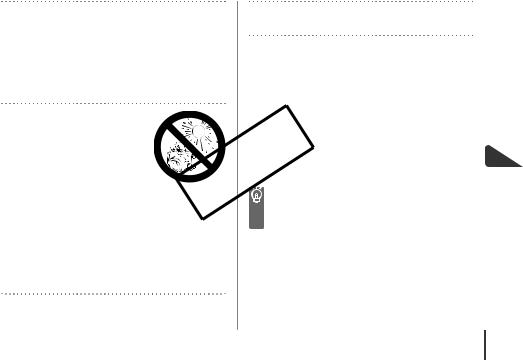
• Vergewissern Sie sich, dass die Handschlaufe von der |
Verwenden Sie nur die beiliegende Silikon-Paste. |
|||
|
Kamera entfernt ist, bevor Sie sie in das Gehäuse einsetzen. |
Die Verwendung anderer Dichtungsmittel kann die Dichtheit des |
||
• Betätigen Sie die Tasten und den Hebel des Gehäuses unter |
Unterwassergehäuses beeinträchtigen. |
|||
|
Wasser nicht mit Gewalt. |
|
|
|
• Spritzen Sie den Dichtungsring nicht mit Leitungswasser ab. |
Dichtungsring |
|||
• Beschädigen Sie den Dichtungsring nicht, und sorgen Sie |
||||
|
dafür, dass sich kein Schmutz zwischen Dichtungsring und |
• Fremdkörper auf dem Dichtungsring können das Eindringen |
||
|
Gehäuse ansammeln kann. |
|
||
|
|
von Wasser verursachen. Ein einziges Haar oder Sandkorn |
||
• Zerlegen oder verändern Sie das Unterwassergehäuse nicht. |
||||
in der Dichtung kann Lecks verursachen. |
||||
Hierdurch könnten Lecks verursacht werden. |
|
|||
|
• Falls die Dichtung beschädigt oder rissig ist, stellen Sie die |
|||
|
|
|
||
Verwenden oder lagern Sie das |
|
Benutzung des Gehäuses sofort ein, und wenden Sie sich |
||
|
an den Canon-Kundendienst. |
|||
Unterwassergehäuse nach Möglichkeit |
|
|||
|
• Lagern Sie das Unterwassergehäuse sorgsam in geöffnetem |
|||
nicht in folgenden Umgebungen. |
|
|||
• Wassertiefen von mehr als 40 Meter. |
|
Zustand, um eine Verformung des Dichtungsrings zu vermeiden |
||
• |
Umgebungen mit Temperaturen |
|
und seine Wasserdichtfähigkeit aufrechtzuerhalten. |
|
|
über 40 °C. |
|
• Schützen Sie die Dichtung während der Lagerung vor Staub |
|
Bewahren Sie das Unterwassergehäuse |
|
und Kratzern. |
||
nach Möglichkeit nicht in folgenden |
|
|
||
Umgebungen auf. |
|
Damit das Kameragehäuse auch wasserdicht bleibt, |
||
• |
Umgebungen mit starker |
|
sollten Sie den Dichtungsring einmal pro Jahr auswechseln. |
|
|
Sonneneinstrahlung. |
|
• Wenden Sie sich an Ihren Canon-Kundendienst, |
|
• |
Feuchte oder staubige Umgebungen. |
|
||
COPY |
||||
• In der Nähe von chemischen |
|
um Ersatz-Dichtungsringe zu erhalten. |
||
Substanzen wie Naphthalin oder Insektiziden.
Werfen Sie das Unterwassergehäuse nicht, und lassen Sie es nicht fallen.
Dies könnte ein Verbiegen des Gehäuses und Fehlfunktionen zur Folge haben.
3
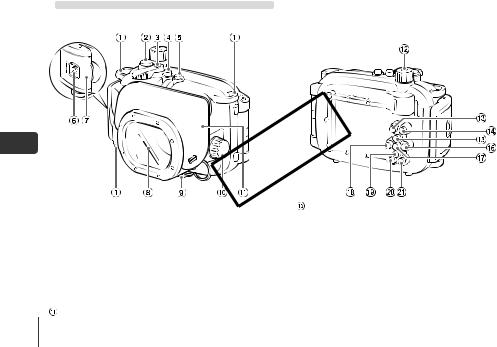
 Überblick über die Komponenten
Überblick über die Komponenten
 Riemenbefestigung
Riemenbefestigung
 Auslöser
Auslöser
 Zoom-Hebel
Zoom-Hebel
 Taste ON/OFF
Taste ON/OFF
 Wahltaste für Steuer-Ring
Wahltaste für Steuer-Ring
 Entriegelungstaste
Entriegelungstaste
 Verriegelung
Verriegelung
 Objektivfenster
Objektivfenster
 Stativgewinde
Stativgewinde
 Steuer-Ring
Steuer-Ring
Streuscheibe
4
COPYModus-Wahlrad
 Taste
Taste (Direktwahl)/c(Direktdruck)
(Direktwahl)/c(Direktdruck)
 Taste 1(Wiedergabe)
Taste 1(Wiedergabe)
 Taste b(Belichtungskorrektur)/ d(Springen)/o
Taste b(Belichtungskorrektur)/ d(Springen)/o
 Taste h(Blitz)/r
Taste h(Blitz)/r
 Taste mFUNC./SET (Funktion/Einstellen)
Taste mFUNC./SET (Funktion/Einstellen)
 Taste e(Makro)/ f(Manueller Fokus)/q
Taste e(Makro)/ f(Manueller Fokus)/q
 Taste Q(Selbstauslöser)/a(Einzelbild löschen)/p
Taste Q(Selbstauslöser)/a(Einzelbild löschen)/p
 Taste l(Anzeige)
Taste l(Anzeige)
 Taste n
Taste n
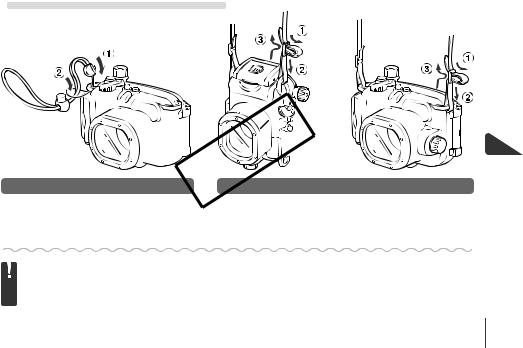
 Vorbereitungen
Vorbereitungen
1
Handschlaufe


 COPY
COPY

Trageriemen
Befestigen Sie die Schlaufe oder den Riemen, und passen Sie die Länge an.
•Nehmen Sie den Trageriemen ab, und bringen Sie die Handschlaufe an, bevor Sie das Gehäuse unter Wasser verwenden. Bei der Verwendung des Trageriemens besteht die Gefahr, dass sich der Riemen am Hals verheddert und zu Strangulation oder anderen Verletzungen führt.
•Benutzen Sie nur die im Lieferumfang des Unterwassergehäuses enthaltenen Handschlaufen.
5
